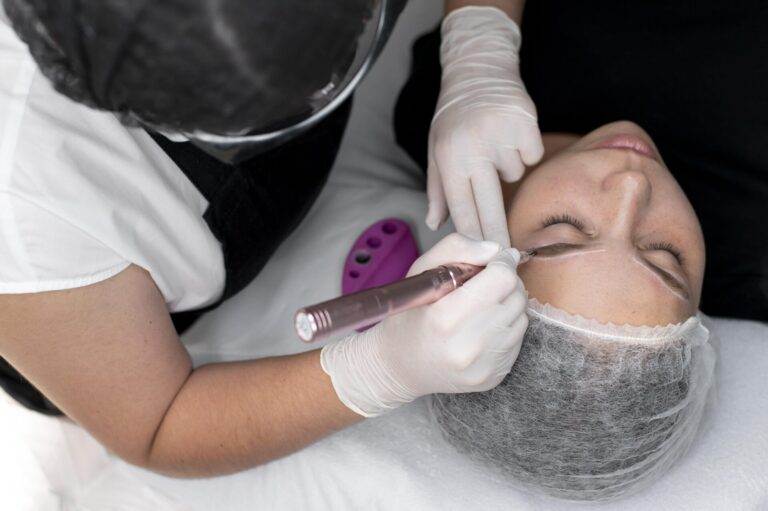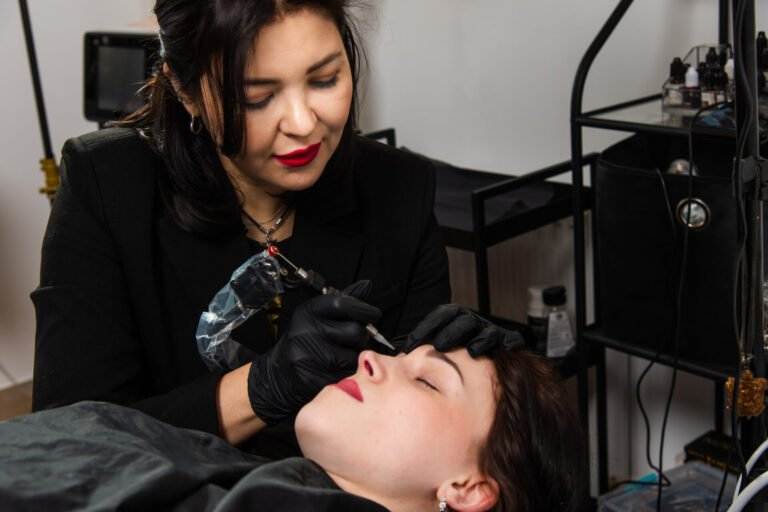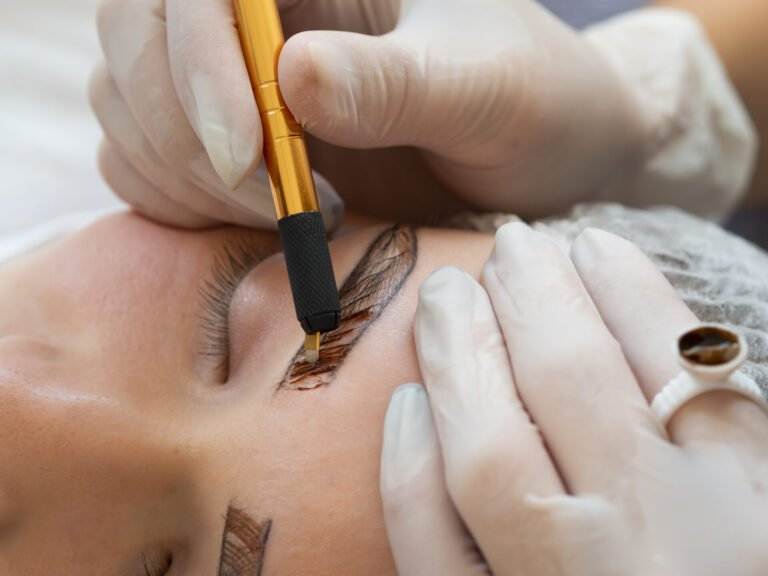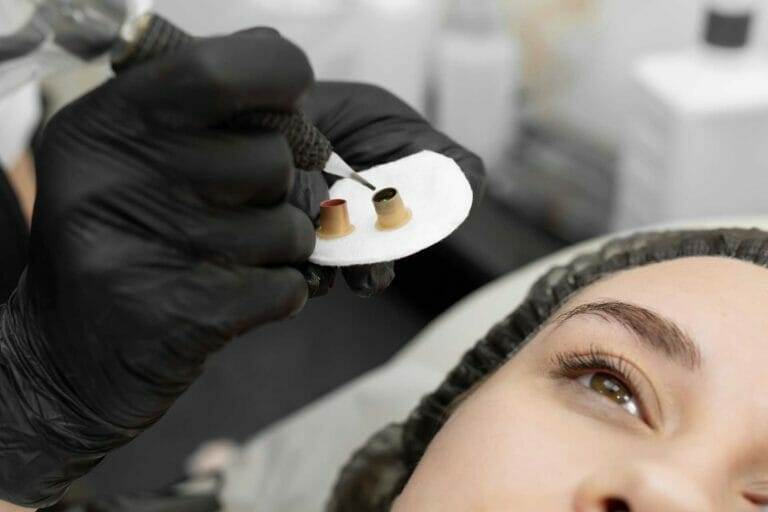Definition of Cosmetic Tattoos
Cosmetic tattoos, often referred to as permanent makeup, are beauty-enhancing procedures that involve tattooing pigments onto the skin. Unlike traditional tattoos, which are primarily associated with artistic designs and expressions, cosmetic tattoos focus on enhancing or defining facial features. This can include procedures such as eyebrow tattooing, lip tinting, and eyeliner application. These tattoos are designed to mimic the appearance of makeup, allowing individuals to reduce the time spent on their daily beauty routines. Cosmetic tattoos utilize techniques like micropigmentation, which involves inserting semi-permanent ink into the dermal layer of the skin. While the term “permanent” suggests longevity, the effects may require touch-ups after a few years, especially with sun exposure and skin changes.
Rising Popularity of Cosmetic Tattoos
The rising popularity of cosmetic tattoos has been striking, driven by several factors that resonate with today’s fast-paced lifestyle. Many individuals appreciate the convenience of waking up with defined features, eliminating the need for time-consuming morning routines. At a time when appearance plays a significant role in personal and professional settings, cosmetic tattoos offer an attractive solution. Here are some key influences contributing to this trend:
- Social Media Influence: With the rise of platforms like Instagram and Pinterest, beauty trends spread quickly. Influencers showcase their cosmetic tattoos, touting the benefits of looking effortlessly polished. This visibility encourages others to explore similar options.
- Enhancements in Techniques: Innovations in application techniques have improved the quality and aesthetics of cosmetic tattoos, making them more appealing. Techniques like microblading, which creates realistic hair-like strokes for eyebrows, have gained acclaim for their natural look.
- Time-Efficiency: In a world where many seek to maximize their time, cosmetic tattoos save precious minutes. Busy professionals, moms, and those juggling multiple responsibilities find solace in the idea of a low-maintenance beauty routine.
- Self-Expression: Lastly, cosmetic tattoos allow individuals to express their personal style permanently. Whether it’s enhancing their existing features or trying out a bold new look, the freedom to define one’s beauty personally encourages more people to consider cosmetic tattoos.
Personal anecdotes further illustrate this shift; for example, Jessica, a busy marketing executive, noted how her life changed after getting eyebrow tattoos. “I can’t believe I waited this long! I used to spend an average of 15 minutes every day filling in my eyebrows. Now, it’s just one less thing to think about each morning,” she shared. In summary, as society evolves to prioritize convenience and efficiency, cosmetic tattoos have emerged as a compelling option for enhancing beauty while fitting seamlessly into busy lifestyles. The blend of practicality, innovation, and self-expression is driving this trend steadily into the mainstream.
Types of Cosmetic Tattoos

Permanent Makeup
Permanent makeup is one of the most recognized forms of cosmetic tattoos, delivering a seamless way to enhance features without the hassle of daily application. This technique involves tattooing pigments onto the skin to replicate the effects of traditional makeup. Common applications include eyebrow tattooing, eyeliner, and lip color. The appeal of permanent makeup lies in its ability to save time while providing a polished look that remains constant regardless of activities such as swimming or sweating. Here are the most popular areas where permanent makeup is applied:
- Eyebrows: Creating fuller, more defined eyebrows without the need for pencils or powders.
- Eyeliner: Defining the eyes more effortlessly, eliminating the need for eyeliner application.
- Lips: Adding a subtle tint or reshaping lip contours for a more youthful appearance.
Anecdotal evidence suggests that individuals who undergo permanent makeup often feel more confident in their appearance. For instance, Lisa, a busy mother of two, remarked, “I used to dread the mornings, trying to get my make-up done before my kids woke up. Now, I can just splash on some moisturizer, and I’m good to go!” While permanent makeup offers a fantastic solution for many, it’s essential to choose a qualified practitioner since the results are, well, permanent!
Microblading
Microblading is a specialized form of cosmetic tattooing focused primarily on the eyebrows. Unlike classic permanent makeup techniques, microblading uses a precise hand-held tool equipped with tiny needles to create fine, hair-like strokes. This approach gives a remarkably natural appearance, making it highly sought after by those wishing to enhance their brows. Some key benefits of microblading include:
- Natural Appearance: The technique provides a more natural look compared to traditional fill or pencil methods.
- Customization: Technicians can customize the shape and shade to complement the individual’s natural features.
- Longevity: While microblading is semi-permanent and typically lasts between 1 to 3 years, many find it’s an excellent choice because it fades subtly.
Personal experiences further highlight the satisfaction that comes from microblading. Mark, a young professional, shared, “Thinking about it made me nervous, but the results were more than worth it. I feel like I have my brows back! I can’t believe how much it brightened my face.” It’s important to mention that microblading requires proper aftercare and occasional touch-ups to maintain its appearance. However, for many, the combination of minimal maintenance and aesthetic enhancement far outweighs the initial considerations. Both permanent makeup and microblading showcase the diverse opportunities available in the realm of cosmetic tattoos. By understanding the unique characteristics and benefits of each technique, individuals can make informed decisions that align with their beauty goals and lifestyles.
Safety Concerns with Cosmetic Tattoos

Risks Associated with Cosmetic Tattoos
Despite their increasing popularity, cosmetic tattoos carry certain risks that should not be overlooked. While many people experience successful outcomes, others may encounter complications that can lead to unsatisfactory results or health concerns. Understanding these risks can help individuals make more informed decisions. Some of the primary risks associated with cosmetic tattoos include:
- Infection: Any procedure that involves skin penetration carries a risk of infection. If proper sanitation practices aren’t followed—such as using clean needles or maintaining a sterile environment—there can be serious consequences.
- Allergic Reactions: Some individuals may have allergic reactions to the pigments used in cosmetic tattoos. Symptoms can range from mild redness to severe skin reactions, necessitating immediate medical attention.
- Scarring: If the tattooing process is not executed correctly, or if appropriate aftercare is ignored, scarring may occur, leading to permanent marks on the skin.
- Color Fading or Changes: Pigments can fade over time or change color due to sun exposure, age, or skin type. This can lead to uneven brows or lips, necessitating further treatments.
- Dissatisfaction with Results: With permanent makeup, there’s no turning back. If the aesthetic outcome is not what the individual envisioned, it can result in significant disappointment.
Jackie, a beauty enthusiast, recounted her experience with permanent eyeliner: “I didn’t realize how sensitive my skin was! I had an allergic reaction three weeks after getting it done. It was frustrating and made me more cautious.”
Factors to Consider Before Getting a Cosmetic Tattoo
Before committing to a cosmetic tattoo, there are several critical factors individuals should contemplate to mitigate risks and ensure a final result they’ll be happy with.
- Researching the Practitioner: It’s vital to choose a licensed and experienced tattoo artist. Reviews, testimonials, and before-and-after photos can offer insight into their work.
- Consultation: Schedule a consultation beforehand to discuss your expectations and ask questions about procedures and aftercare. A good artist will provide detailed information and help manage any concerns.
- Skin Type and Conditions: People with certain skin types or conditions may have higher susceptibility to complications. Conditions such as eczema, psoriasis, or infections should be disclosed to the practitioner.
- Understanding Aftercare: Proper aftercare is crucial for achieving the best results. Artists typically provide guidelines, and adhering to these instructions can prevent complications.
- Long-Term Considerations: Think about whether you’re willing to commit to a permanent or semi-permanent change. Before proceeding, it’s worthwhile to consider how your style might evolve in the future.
Ultimately, while cosmetic tattoos can offer a transformative and time-saving beauty enhancement, they are not without risks. By being thorough in preparation and understanding the potential pitfalls, individuals can navigate their journey confidently and achieve the results they desire. It’s always best to proceed with caution and engage in open dialogue with professionals to ensure a positive experience.
Preparing for a Cosmetic Tattoo
Finding a Reputable Tattoo Artist
Preparing for a cosmetic tattoo begins with the crucial task of finding a reputable tattoo artist. The quality of the artist can significantly impact the outcome of the procedure, making this step essential for a successful experience. Here are some tips to guide you in your search:
- Check Credentials: Look for an artist who is certified and specializes in cosmetic tattoos. Their training and expertise will enhance your confidence in their capabilities.
- Read Reviews and Testimonials: Online platforms and social media are rich sources for reviews. Pay attention to what previous clients have to say about their experiences, and look for before-and-after photos to assess the artist’s work.
- Schedule a Visit: If possible, visit the studio beforehand. A clean, professional environment is crucial for ensuring safety and hygiene. Additionally, meet the artist in person to gauge their demeanor and professionalism.
- Look for Recommendations: Word-of-mouth recommendations from friends or family can be invaluable. If someone you know has had a positive experience, it’s a good starting point for your search.
Jenna, a satisfied client, shared her experience: “I found my artist through a friend’s recommendation, and meeting her in person before making a decision made all the difference. I felt safe and valued, which eased my nerves!”
Pre-Tattoo Consultation
Once you’ve selected a tattoo artist, the next crucial step is to attend a pre-tattoo consultation. This meeting provides an opportunity to discuss your desires, ask questions, and ensure clarity before the procedure. Here’s what to expect during this consultation:
- Discuss Your Expectations: Clearly articulate what you want from the cosmetic tattoo. Whether it’s the shape of your eyebrows or the color of your lips, providing detailed descriptions helps the artist understand and deliver your vision.
- Review Health History: Be prepared to discuss any medical conditions, allergies, or medications you’re taking. This information is vital for the artist to ensure a safe and successful procedure.
- Ask Questions: This is your chance to seek clarification about the process. Inquire about the techniques used, the longevity of the tattoo, and what you can expect during recovery.
- Understand Aftercare Instructions: Discuss the aftercare required post-procedure. Knowing how to care for your cosmetic tattoo can lead to better results and minimize risks.
- Discuss Pricing and Policies: Ensure you understand the cost involved, including potential touch-ups, and clarify any cancellation or refund policies.
During her consultation for microblading, Sarah noted, “I felt so much more at ease after asking my artist all my questions. She was patient and took the time to explain everything in detail, which made me feel like I was in good hands.” By thoroughly preparing before your cosmetic tattoo session, from selecting a reputable artist to engaging in a comprehensive consultation, you set the stage for a successful outcome. Understanding each aspect of the process builds confidence and enhances the chances of achieving a look you’ll love long-term. Happy preparing!
The Cosmetic Tattooing Process


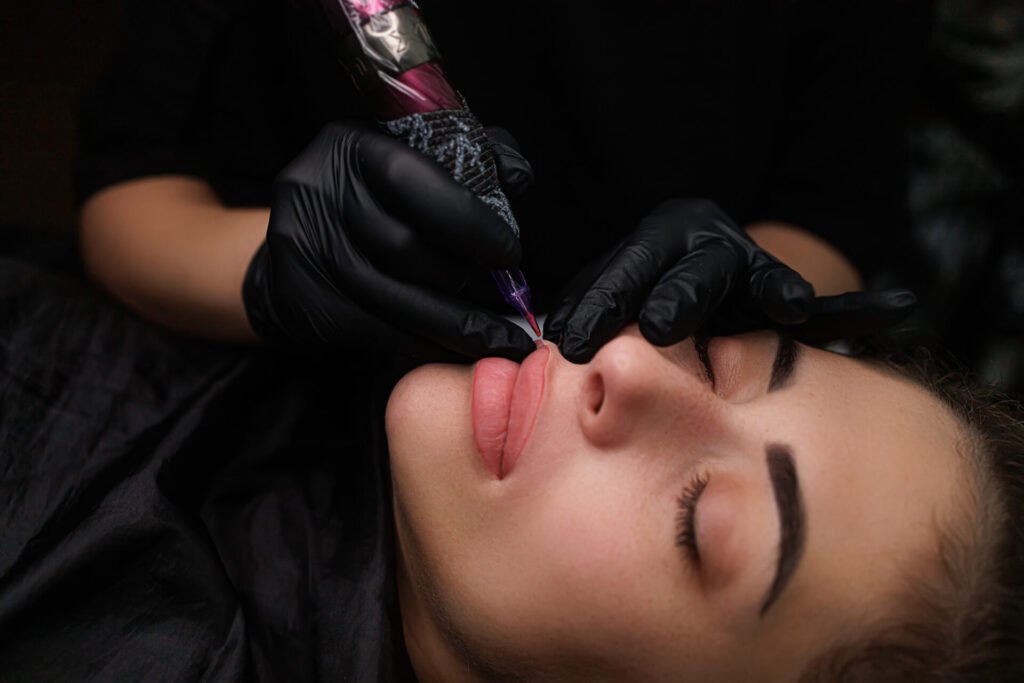
What to Expect During the Procedure
Now that you’ve selected a reputable tattoo artist and prepared for your cosmetic tattoo, it’s time to understand what to expect during the actual procedure. Being informed can help alleviate anxiety and make the experience more enjoyable. Here’s a breakdown of the typical steps involved in the process:
- Consultation Review: Before starting, the artist will review your consultation notes to confirm your desired look, including any corrections or adjustments based on your feedback.
- Design and Shaping: For procedures like microblading, the artist will first sketch the shape of the desired tattoo on your skin using a soft pencil. This allows you to visualize the final product before the tattooing begins. Take this opportunity to voice any changes!
- Numbing Cream Application: A topical anesthetic is usually applied to minimize discomfort during the procedure. After allowing it to set for a specific time, you should feel minimal pain or sensitivity.
- Tattooing: The artist will then start the tattoo process. Depending on the technique—be it microblading or permanent makeup—the artist will employ different tools and methods to deposit pigment. Throughout this stage, communication is key. Don’t hesitate to let them know if you feel any discomfort.
- Final Touches and Cleaning: Once the tattoo is complete, the artist will clean the area and apply a soothing ointment to help with healing. They will typically explain the final look and when to expect results.
Sara, who recently got her eyebrows done, mentioned, “I was surprised by how relaxed I felt throughout the procedure! My artist was gentle and kept checking in on how I was doing.”
Aftercare Instructions for Cosmetic Tattoos
After the procedure, proper aftercare is critical to ensure that your cosmetic tattoo heals correctly and looks its best. Here are some general aftercare guidelines to follow:
- Keep the Area Clean: Gently clean the treated area with mild soap and water to avoid infection. Pat it dry with a clean towel—do not rub.
- Apply Ointment: Your artist will likely recommend a specific ointment to apply to keep the area moisturized and help with the healing process. Follow their instructions on how frequently to apply it.
- Avoid Makeup: Resist the temptation to apply makeup on the tattooed area for at least a week. This helps prevent irritation and allows the skin to breathe.
- Limit Sun Exposure: Protect your healing tattoo from direct sunlight and avoid tanning beds. Ultraviolet light can fade the pigments and affect healing.
- Do Not Pick or Scratch: As the area heals, it may scab or itch. While it’s natural to want to scratch, it’s crucial to allow the area to heal naturally to avoid scarring or uneven pigmentation.
- Follow-Up Appointment: Many artists recommend a follow-up appointment six to eight weeks after the initial procedure. This allows them to assess the healing process and make any necessary touch-ups.
When it comes to aftercare, Lisa shared, “I took it seriously and followed my artist’s instructions to the letter. It definitely paid off. My results were fabulous and healing was quick!” By being prepared for both the procedure itself and the necessary aftercare, you set yourself up for a successful cosmetic tattoo experience. Relax, enjoy the process, and before you know it, you’ll be admiring your enhanced features!


